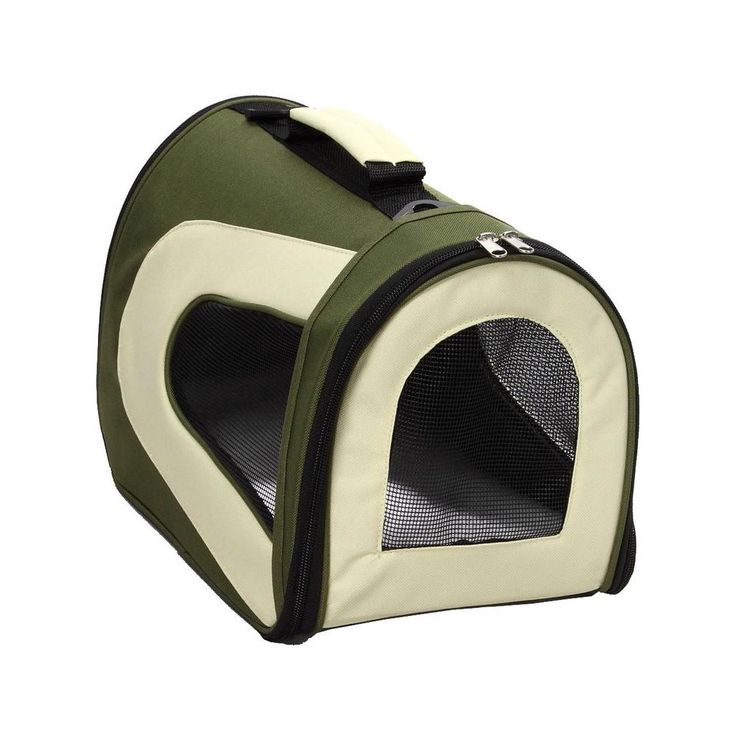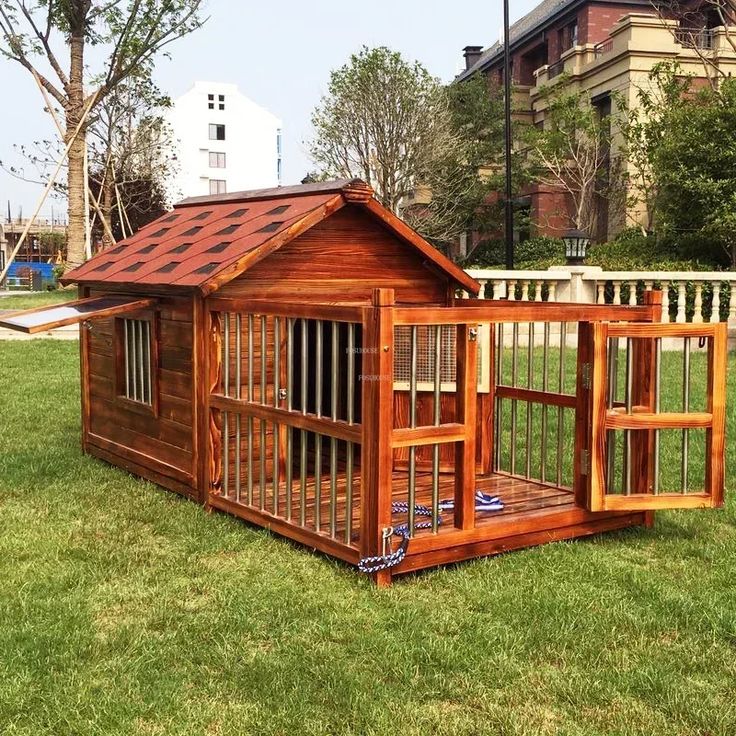When it comes to providing a safe and comfortable environment for our canine companions, selecting the right dog kennel is crucial. An indoor dog kennel serves as a sanctuary for your pet, offering a secure space they can call their own. Whether you’re seeking a place for your dog to relax or need to contain them during certain times of the day, understanding the intricacies of indoor dog kennels can enhance your pet’s well-being while fitting seamlessly with your home decor. In this comprehensive guide, we will explore what to consider when choosing a dog kennel for inside, the benefits of using one, the various types available, and tips for ensuring your dog feels comfortable and secure in their new space.
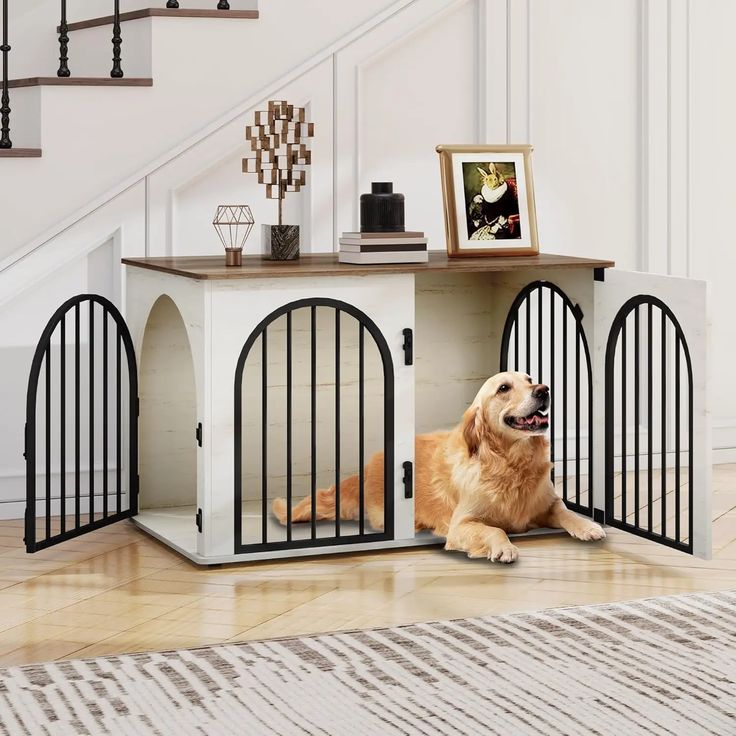
Why Choose an Indoor Dog Kennel?
An indoor dog kennel can be particularly beneficial for several reasons. Understanding these reasons helps pet owners make informed decisions about their canine’s needs.
1. Safety and Security
Firstly, an indoor kennel provides a safe environment for your dog. This is especially important for puppies or new dogs who may not yet be fully trained and could chew on household items or get into dangerous situations. An indoor kennel offers a secure area where your dog can feel safe, reducing the risk of accidents when you’re not able to supervise them directly.
2. A Personal Retreat
Dogs are creatures of habit and appreciate having a designated space that they can retreat to at any time. An indoor kennel gives them a personal retreat, where they can rest and feel comfortable. It can also help reduce anxiety in dogs by giving them a familiar environment during stressful situations, such as loud noises or unfamiliar visitors.
3. House Training Assistance
Indoor kennels can be instrumental in house training. Dogs have a natural instinct to avoid soiling their sleeping area. Therefore, an appropriately sized kennel can encourage your dog to hold it until they are let outside. Many trainers and veterinarians recommend using indoor kennels as part of a positive reinforcement plan for house training.
4. Preventing Destructive Behavior
Many dogs, especially puppies, can exhibit destructive behavior when left unattended. Chewing furniture, tearing up carpets, or digging through trash can become significant problems. An indoor kennel confines your dog to a safe space, which can help prevent them from engaging in unwanted behaviors while you’re not watching.
Key Considerations When Choosing an Indoor Dog Kennel
Choosing the right dog kennel for inside involves several considerations. Each of these factors contributes to the overall effectiveness of the kennel for both you and your dog.
1. Size Matters
When selecting an indoor kennel, size is the most critical factor to consider. You want your dog to have enough room to stand, turn around, and lie down comfortably. Measure your dog’s height and length while considering their breed’s adult size. Many kennels come in varying sizes, so choose accordingly to ensure your dog is well accommodated. A kennel that is too small can cause discomfort, while one that is too large may undermine the kennel training purpose.
2. Material and Durability
Indoor dog kennels come in various materials, including plastic, metal, and fabric. Each material has its advantages:
- Plastic Kennels: Lightweight and often more aesthetically pleasing, plastic kennels are easy to clean and transport. However, they may not be as durable for larger or more active dogs.
- Metal Kennels: These are typically the most durable and can withstand chewing and scratching. Metal kennels often have removable trays for easy cleaning, but they can be heavier and more challenging to move.
- Fabric Kennels: Soft-sided kennels are great for travel and easy to set up. While they may not offer the same durability as metal or plastic options, they are often more comfortable and cozy for the dog.
Consider the environment where you plan to place the kennel. A kennel for a more active dog may require a sturdier material, whereas a calmer dog may thrive in a softer space.
3. Design and Aesthetics
Indoor kennels have evolved significantly in design, and many now resemble beautiful decor items rather than utilitarian cages.
When selecting a kennel, look for options that complement your home decor. Many manufacturers offer stylish crates that can double as furnishings, such as end tables or benches. Heated or multi-functional kennels that include storage can also be appealing for indoor use.
4. Ventilation and Accessibility
Good ventilation is essential for your dog’s comfort. Look for kennels that provide adequate airflow to keep the space fresh and prevent overheating. Many wire crates offer excellent ventilation, but it’s essential to consider how they will be used indoors.
Additionally, ensure the kennel is easy for both you and your dog to access. The kennel’s doors should open wide enough for your dog to enter and exit comfortably, and ideally, you should be able to access your dog without difficulty as well.
5. Features and Accessories
Many indoor dog kennels come with additional features that enhance usability and comfort. Some options to consider include:
- Removable trays: These make cleaning much easier, allowing you to quickly remove waste or spills.
- Padding and bedding accessories: Consider adding a comfortable bed or pad inside the kennel. This will create a cozy retreat for your dog and help reduce anxiety.
- Dividers: Some kennels include dividers that allow you to adjust the size as your puppy grows. This feature can help maximize the kennel’s usefulness during various growth stages.
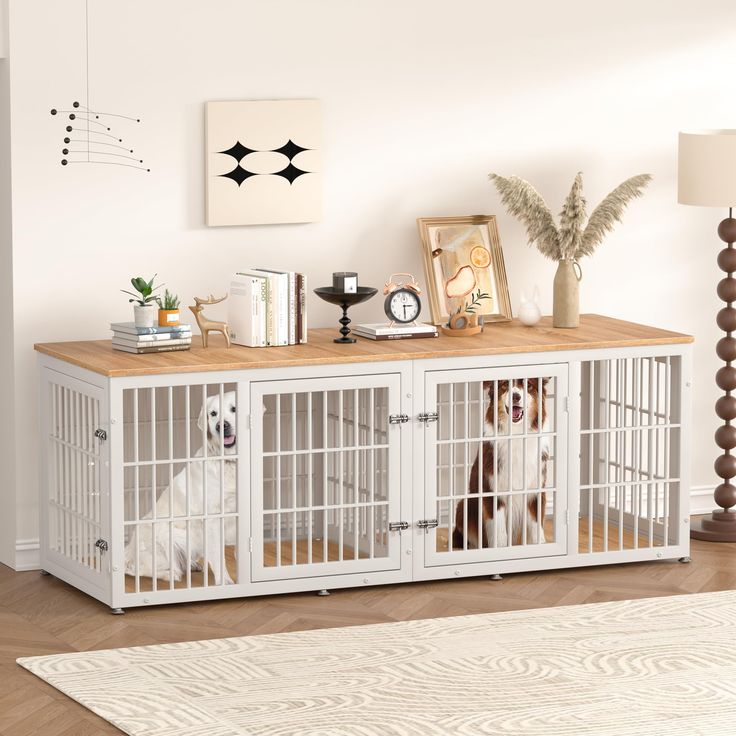
Types of Indoor Dog Kennels
Understanding the various types of dog kennel for inside available will help you make an informed choice. Here, we outline some of the most popular types:
1. Wire Dog Crates
Wire crates are one of the most common types of indoor dog kennels. They offer excellent ventilation and visibility for your dog. They typically come in collapsible designs, making them easy to transport and store. Wire crates are ideal for trained dogs, as they can provide a safe space while still allowing your pup to feel connected to the household.
2. Plastic Kennels
Plastic kennels provide a more enclosed environment for dogs that may feel anxious in open spaces. They are generally lighter and easier to clean than wire alternatives. Plastic kennels can sometimes be more aesthetically pleasing as they come in various colors and styles. However, keep in mind that they may not provide as much airflow.
3. Soft-Sided Kennels
Soft-sided or fabric kennels are lightweight, portable, and easy to set up. They are often favored for travel or outdoor use, as they can fold flat for easy transport. While they don’t offer as much durability or security for active dogs, they can provide a comfortable and inviting space for calm dogs or puppies.
4. Crate Furniture
For those looking for a stylish option, dog crate furniture combines function and design. These crates often resemble furniture, such as a coffee table or drawer chest, making them an attractive addition to your home. They offer safety and comfort for your dog while seamlessly blending into your home decor.
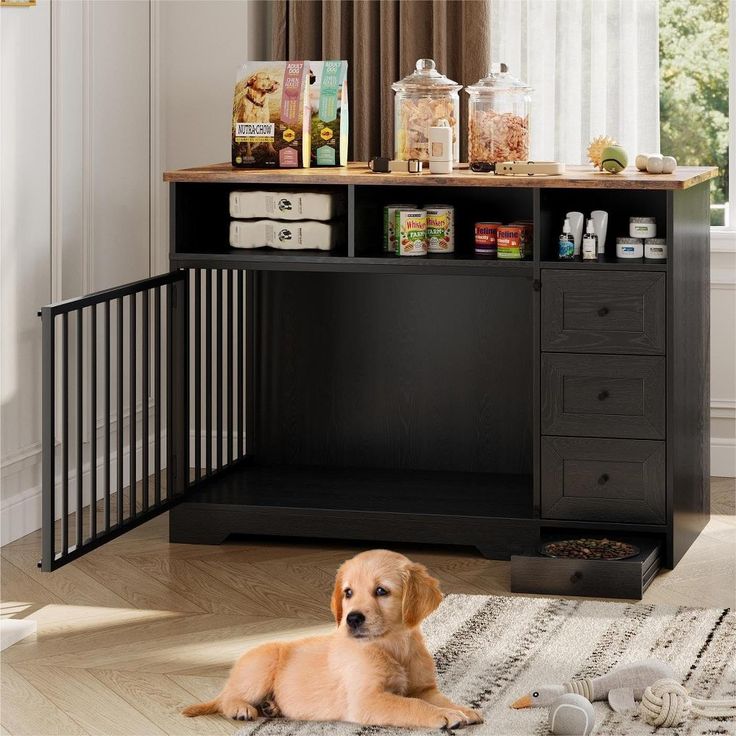
Training Your Dog to Use the Indoor Kennel
Introducing your dog to their new kennel requires patience and positive reinforcement. Proper training can help ensure that your dog views their kennel as a safe and comfortable space rather than a place of confinement.
1. Gradual Introduction
Start by allowing your dog to explore the kennel freely without forcing them inside. Place treats or toys inside and encourage them to go in on their own. This positive reinforcement will help create positive associations with the kennel.
2. Short Duration Stays
Once your dog enters the kennel voluntarily, you can begin to close the door for short periods. Gradually increase the duration they remain inside, offering treats and praise when you let them out.
3. Create a Positive Environment
Ensure that the kennel is furnished with cozy bedding and toys. A safe and inviting environment will help your dog feel comfortable and relaxed. Avoid using the kennel as a form of punishment, as this can lead to negative associations.
4. Consistent Routine
Establish a consistent routine for kennel time. Incorporate it into your dog’s daily schedule—such as during meals or when you are out of the house. This will help them understand that the kennel is just a part of life and not something to fear.
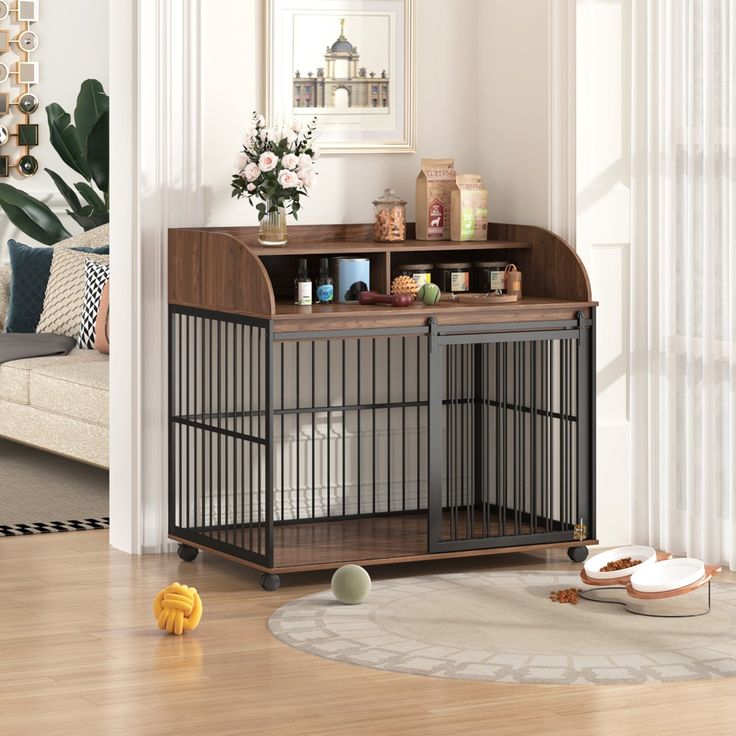
Maintaining Your Indoor Dog Kennel
To ensure a long lifespan for your dog kennel for inside, regular maintenance is necessary. Here are some tips to keep it clean and effective:
1. Regularly Clean the Kennel
Vacuum or wipe down the kennel regularly to remove fur and dirt. If your kennel has a removable tray, clean it frequently to prevent odors buildup. For fabric kennels, follow the manufacturer’s instructions for cleaning to avoid damage.
2. Replace Bedding Periodically
Check the bedding or pads inside the kennel frequently. Replace or wash them as needed to keep your dog’s sleeping area fresh and hygienic.
3. Inspect for Damage
Regularly inspect your kennel for any signs of wear and tear. Check for rust on metal crates or cracks on plastic crates. Addressing these issues earlier can prevent further damage and ensure your kennel remains safe for your dog.
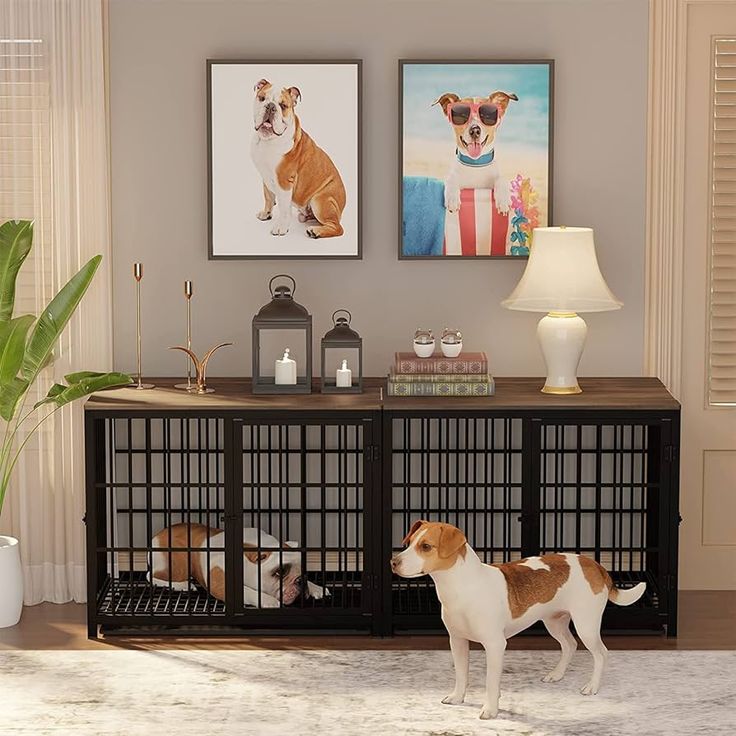
Conclusion
Choosing the right dog kennel for inside your home is an important decision that can greatly affect your pet’s well-being and happiness. Consider various factors such as size, material, design, and functionality to ensure you select a kennel that meets both your and your dog’s needs. Explore the different types available, from wire crates to stylish crate furniture, and take your dog through a positive training process to ensure they feel comfortable and secure. Proper maintenance will prolong the life of your indoor kennel, providing your furry friend with a cozy retreat for years to come.
By prioritizing your dog’s comfort and safety while integrating the kennel into your home decor, you create a nurturing environment where your canine companion can thrive. Providing a designated space for relaxation and security will enhance your pet’s quality of life, making them happier and healthier.
